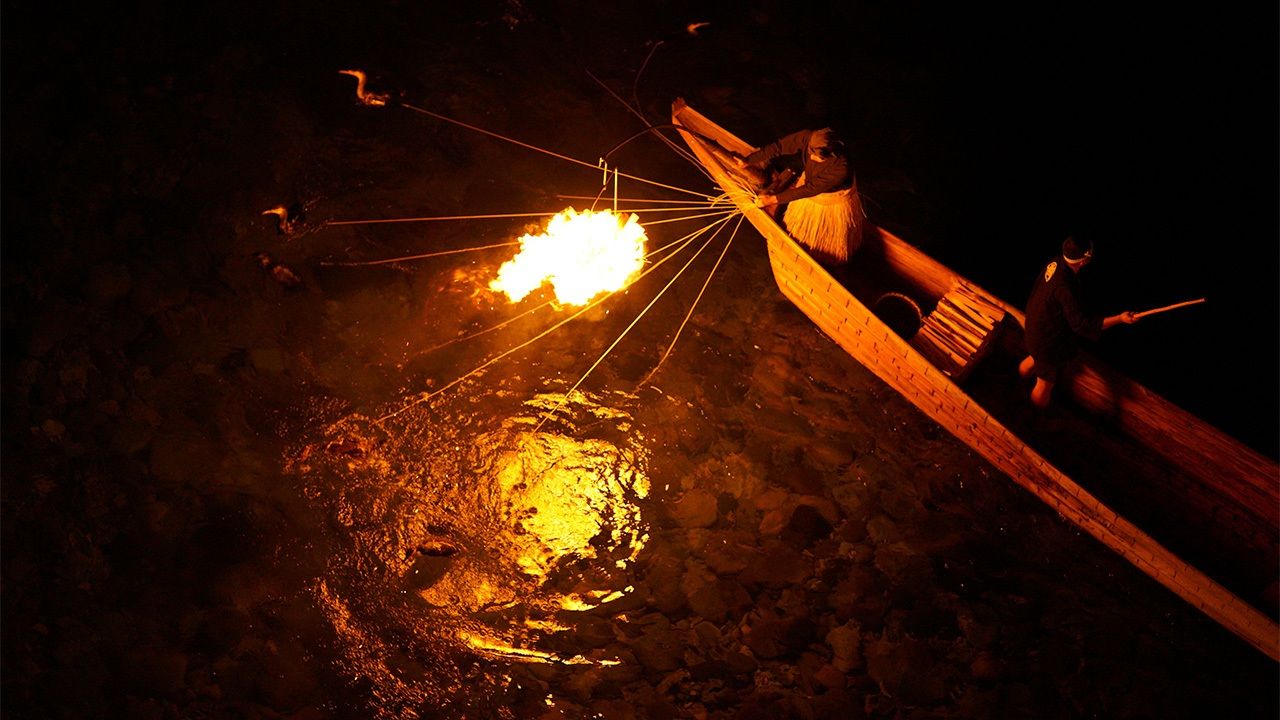
A Journey Through Japanese Haiku
The Fisherman’s Sorrow
Culture Environment Lifestyle- English
- 日本語
- 简体字
- 繁體字
- Français
- Español
- العربية
- Русский
おもしろうてやがて悲しき鵜舟哉 芭蕉
Omoshirōte / yagate kanashiki / ubune kana
Enchanting, and
then what sorrow—
cormorant boats(Poem by Bashō, written in 1688.)
This haiku was written by Bashō when he viewed cormorant fishing on the Nagara River. In this practice, fishermen use cormorants to catch sweetfish; the birds have snares around their necks to prevent them swallowing the fish that they catch. The custom is still seen in parts of Japan today in summer. In a preface to the poem, Bashō writes of its high reputation and claims he lacks the talent to describe it, as well as talking of his sorrow at leaving the boats behind to return home along a dark, night path.
The second half of the preface and the poem itself make reference to the nō play Ukai (trans. by Arthur Waley as The Cormorant-Fisher). In a famous scene, the ghost of a fisherman, forcibly drowned for catching fish in a forbidden part of the river, demonstrates his skill. At the end of this, he says, “The lights of the fishing boat are extinguished, and I return unwillingly to the darkness of the other world.”
After the allusion to this moment in the preface, the haiku itself incorporates other words the fisherman uses in the play to express his feelings, so that the “sorrow” becomes associated with his sin of taking life. In a number of Bashō’s late haiku, this technique of reference to nō drama adds emotional layers to his expression.
(Originally published in Japanese. Banner photo © Pixta.)
Related Tags
literature haiku Matsuo Bashō Japanese language and literature
